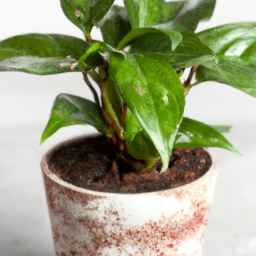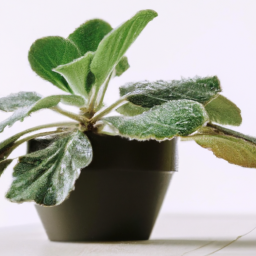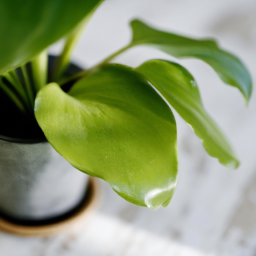
Are you looking to bring a touch of nature into your home? Look no further than this Indoor Plants Guide! Indoor plants not only add beauty and freshness to your space, but they also have numerous health benefits. From improving air quality to reducing stress levels, indoor plants are a must-have for any home. In this guide, we will explore the best indoor plants for beginners, tips for caring for your plants, and how to incorporate them into your decor. Whether you have a green thumb or are just starting out, this guide will help you create a thriving indoor garden that will bring joy and tranquility to your home. So let’s dive in and discover the wonderful world of indoor plants!
Benefits of Indoor Plants: A Comprehensive Guide
Introduction
Indoor plants are not just a beautiful addition to your home decor, they also offer a wide range of benefits for your health and well-being. From improving air quality to reducing stress levels, indoor plants have been proven to have a positive impact on our lives. In this comprehensive guide, we will explore the various benefits of indoor plants and how you can incorporate them into your home.
Improving Air Quality
One of the most well-known benefits of indoor plants is their ability to improve air quality. Plants absorb carbon dioxide and release oxygen through the process of photosynthesis, which helps to purify the air in your home. In addition, plants can also remove harmful toxins such as formaldehyde, benzene, and trichloroethylene from the air, making it cleaner and healthier to breathe.
Having a few indoor plants in your home can significantly reduce indoor air pollution and create a more pleasant and healthy living environment. Some of the best plants for improving air quality include spider plants, peace lilies, and snake plants. These plants are easy to care for and can thrive in a variety of indoor conditions.
Incorporating indoor plants into your home decor not only adds a touch of nature to your space but also provides tangible health benefits. By choosing the right plants and placing them strategically throughout your home, you can enjoy cleaner and fresher air all year round.
Reducing Stress and Boosting Mood
In addition to improving air quality, indoor plants can also have a positive impact on your mental health. Studies have shown that being around plants can help to reduce stress levels, lower blood pressure, and improve overall mood. The presence of greenery in your home can create a sense of calm and relaxation, making it easier to unwind after a long day.
Plants have a natural ability to soothe the mind and body, which is why they are often used in therapeutic settings such as hospitals and rehabilitation centers. By bringing plants into your home, you can create a peaceful sanctuary where you can escape the stresses of daily life and reconnect with nature.
Taking care of indoor plants can also be a rewarding and therapeutic experience in itself. The act of watering, pruning, and tending to your plants can help to cultivate a sense of mindfulness and presence, allowing you to focus on the present moment and find joy in the simple act of caring for living things.
In conclusion, indoor plants offer a wide range of benefits for both your physical and mental health. By incorporating plants into your home decor, you can enjoy cleaner air, reduced stress levels, and a brighter mood. So why not bring a little piece of nature into your home and experience the many benefits of indoor plants for yourself?

Top 10 Indoor Plants for Beginners: A Helpful Guide
Welcome to our helpful guide on the top 10 indoor plants for beginners! If you are new to the world of indoor gardening, choosing the right plants can be a daunting task. But fear not, we are here to help you navigate through the vast array of options and find the perfect plants for your home.
Choosing the Right Plants
When selecting indoor plants, it is important to consider factors such as light, temperature, humidity, and maintenance requirements. Some plants thrive in low light conditions, while others need plenty of sunlight. Similarly, some plants prefer warm temperatures, while others do well in cooler environments. By understanding the needs of each plant, you can ensure that they will thrive in your home.
For beginners, we recommend starting with easy-to-care-for plants that are resilient and forgiving. These plants are perfect for those who are new to gardening and may not have a green thumb yet. Some of the top 10 indoor plants for beginners include:
Snake Plant
The snake plant, also known as mother-in-law’s tongue, is a hardy plant that can thrive in a variety of conditions. It is perfect for beginners as it requires minimal care and can tolerate low light levels. The snake plant is also known for its air-purifying properties, making it a great addition to any home.
To care for a snake plant, simply place it in indirect sunlight and water it sparingly. Allow the soil to dry out between waterings to prevent root rot. With proper care, your snake plant will thrive and grow steadily.
Another great option for beginners is the pothos plant. This versatile plant is easy to care for and can thrive in a variety of conditions. It is perfect for beginners as it is forgiving and can withstand neglect. The pothos plant is also known for its trailing vines, making it a great choice for hanging baskets or shelves.
Spider Plant
The spider plant is another great option for beginners. This plant is known for its air-purifying properties and easy care requirements. It can thrive in a variety of conditions and is perfect for those who are new to gardening. The spider plant is also known for its arching leaves and small white flowers, making it a beautiful addition to any home.
To care for a spider plant, place it in indirect sunlight and water it regularly. Allow the soil to dry out between waterings to prevent root rot. With proper care, your spider plant will thrive and produce new plantlets that can be propagated to create more plants.
These are just a few of the top 10 indoor plants for beginners. By choosing plants that are easy to care for and resilient, you can create a beautiful indoor garden that will thrive for years to come. Happy gardening!

Indoor Plant Care: Tips and Tricks for Keeping Your Plants Healthy and Happy
Understanding the Basics of Indoor Plant Care
When it comes to caring for indoor plants, there are a few key factors to keep in mind to ensure that your plants thrive. First and foremost, it’s important to understand the specific needs of each plant species you have in your home. Different plants require different levels of sunlight, water, and humidity, so it’s essential to do your research and tailor your care routine accordingly.
In general, most indoor plants prefer bright, indirect sunlight. Placing your plants near a window where they can receive plenty of natural light is ideal, but be sure to avoid placing them in direct sunlight, as this can cause their leaves to burn. If your home doesn’t get a lot of natural light, consider investing in a grow light to help supplement your plants’ lighting needs.
When it comes to watering your indoor plants, the key is to strike a balance. Overwatering can lead to root rot and other issues, while underwatering can cause your plants to wilt and die. To determine when your plants need water, check the soil moisture level by sticking your finger into the soil. If it feels dry to the touch, it’s time to water. Be sure to use room temperature water, as cold water can shock your plants’ roots.
In addition to light and water, humidity is another important factor to consider when caring for indoor plants. Most houseplants prefer a humidity level of around 50-60%, which can be challenging to maintain, especially during the winter months when indoor air tends to be dry. To increase humidity around your plants, consider placing a humidifier nearby or grouping your plants together to create a microclimate.
Troubleshooting Common Indoor Plant Issues
Despite your best efforts, you may encounter some common issues when caring for indoor plants. One of the most common problems is yellowing leaves, which can be caused by a variety of factors, including overwatering, underwatering, nutrient deficiencies, or pests. To address yellowing leaves, start by checking the soil moisture level and adjusting your watering routine accordingly. If the issue persists, consider repotting your plant into fresh soil and inspecting it for pests.
Another common issue that indoor plants face is pest infestations, such as spider mites, aphids, or mealybugs. If you notice any signs of pests on your plants, such as webbing, sticky residue, or tiny insects, it’s important to take action quickly to prevent the infestation from spreading. Depending on the type of pest, you may be able to remove them by hand, spray your plants with insecticidal soap, or introduce beneficial insects to help control the population.
In addition to yellowing leaves and pest infestations, indoor plants can also suffer from root rot, wilting, or leaf drop if their care needs are not being met. If you notice any of these issues, it’s important to assess your plants’ growing conditions and make any necessary adjustments to help them recover. This may include repotting your plants into well-draining soil, adjusting their lighting or watering routine, or providing them with the necessary nutrients they need to thrive.
Advanced Indoor Plant Care Techniques
For those looking to take their indoor plant care to the next level, there are a few advanced techniques that can help your plants thrive even more. One such technique is pruning, which involves removing dead or damaged leaves, stems, or flowers from your plants to promote new growth and improve their overall appearance. Pruning can also help prevent pests and diseases from spreading throughout your plant collection.
Another advanced technique to consider is fertilizing your indoor plants to provide them with the essential nutrients they need to grow and flourish. There are many different types of fertilizers available, including liquid, granular, and slow-release formulas, so be sure to choose one that is appropriate for your plants’ specific needs. When fertilizing your plants, be sure to follow the instructions on the product label and avoid overfertilizing, as this can cause nutrient imbalances and harm your plants.
In addition to pruning and fertilizing, another advanced technique to consider is repotting your indoor plants to provide them with fresh soil and room to grow. Repotting is especially important for fast-growing plants or those that have become root-bound in their current containers. When repotting your plants, be sure to choose a pot that is slightly larger than their current one, use well-draining soil, and gently loosen their roots before placing them in their new container.
By following these tips and tricks for indoor plant care, you can create a healthy and happy environment for your plants to thrive in. Remember to stay attentive to your plants’ needs, adjust your care routine as necessary, and enjoy the beauty and benefits that indoor plants can bring to your home.
Essential Points
Are you looking to add some greenery to your indoor space but not sure where to start? Look no further! This indoor plants guide will help you choose the perfect plants for your home or office.
From low-maintenance succulents to air-purifying snake plants, this guide covers a variety of indoor plants that are easy to care for and can thrive in different lighting conditions. Whether you have a green thumb or are a beginner plant parent, there is a plant for everyone in this guide. So, bring some life into your space and enjoy the benefits of having indoor plants!
Frequently Asked Questions (FAQ):
Q1: What are some easy-to-care-for indoor plants?
A1: Some easy-to-care-for indoor plants include pothos, snake plants, spider plants, and peace lilies. These plants require minimal maintenance and can thrive in various indoor conditions.
Q2: How often should I water my indoor plants?
A2: The frequency of watering indoor plants depends on factors such as the type of plant, the size of the pot, and the environmental conditions. In general, it’s best to water when the top inch of soil feels dry to the touch.
Q3: What are some common indoor plant pests to watch out for?
A3: Common indoor plant pests include spider mites, mealybugs, aphids, and fungus gnats. It’s important to regularly inspect your plants for any signs of pest infestations and take action promptly to prevent damage.
Q4: How can I improve the humidity levels for my indoor plants?
A4: To improve humidity levels for indoor plants, you can place a humidifier near your plants, mist them regularly with water, or group plants together to create a microclimate. You can also place a tray of water near your plants to increase humidity.
Q5: What are some low-light indoor plants for spaces with limited sunlight?
A5: Some low-light indoor plants that can thrive in spaces with limited sunlight include pothos, peace lilies, snake plants, and ZZ plants. These plants are well-suited for environments with indirect or artificial light.

James Wong is a renowned ethnobotanist, plant scientist, and local television presenter. With a passion for demystifying plant science, he is known for translating complex botanical concepts into practical advice for everyday plant enthusiasts. James’s expertise spans from traditional gardening to cutting-edge plant technologies, making his insights accessible and informative.


